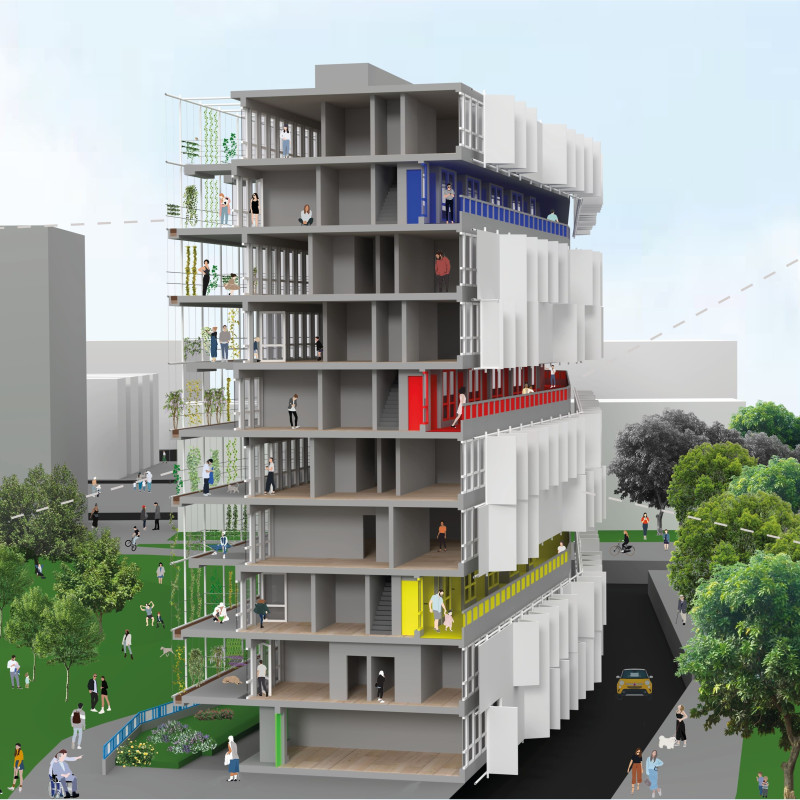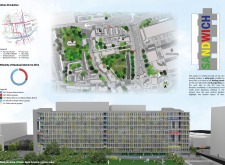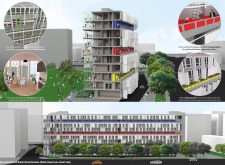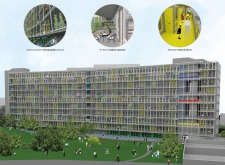5 key facts about this project
The design located in the Blackwall district of London redefines urban living through a thoughtful approach to community integration and sustainability. Two distinct facades stand out: a white grid framework on the east side framing dynamic folding panels, and vibrant vertical gardens on the west side. This combination aims to create a relationship between the built environment and nature, fostering a more interactive and livable community.
Design Concept
The design emphasizes breaking away from traditional brutalist structures in favor of a more engaging form. The folding panels add visual interest and flexibility, enabling passive solar shading and varied functionality. This modern approach not only enhances the building's aesthetic but also allows for practical living solutions that meet contemporary needs.
Vertical Gardens
On the west facade, vertical gardens play a fundamental role in improving the microclimate and contributing to ecological balance. With their lush greenery, these gardens soften the architectural presence while encouraging biodiversity. Their strategic placement optimizes access and views, making them an important part of the residential experience and positively impacting the well-being of residents.
Community-Centric Layout
Inside, the apartments have been thoughtfully arranged to maximize space for different types of occupants. The design optimizes layouts to create flexible living areas suitable for families and shared living situations. Also, duplex units have been converted into communal spaces for laundry and gatherings. This encourages a sense of community while reducing dependence on individual household appliances.
Materials and Aesthetics
The design uses minimalist materials, specifically the white grid and folding panels. These elements reflect a modern architectural style that focuses on simplicity. By highlighting these details, the design allows the vibrant greenery and communal areas to take center stage. The result is an inviting atmosphere that connects residents with their environment and encourages outdoor engagement.
Colorful vertical gardens overflow their boundaries and integrate with the building's structure, creating a layered effect that enhances the overall experience of the space.























































